Partnering Case Studies
Nursing students will have the best clinical learning experiences in nursing home settings if nursing school faculty and nursing home staff have strong partnerships. Both entities must be aware of the other’s goals and needs. For example:
- A school’s goal may be for students to demonstrate the following competency: Implement strategies and use guidelines to prevent and/or identify and manage geriatric syndromes (e.g., pressure ulcers, delirium).
- A nursing home’s goal may be to prevent the development of pressure ulcers.
In this case, both goals are compatible and faculty, students, and nursing home staff could collaborate to achieve both goals. This partnership would require the nursing home staff to view themselves as clinical teachers and/or mentors for students, and the faculty to understand the protocols nursing homes use for various geriatric syndromes (pressure ulcers in this case).
Even when faculty and the nursing home staff have established good partnerships, issues will inevitably arise when students are in the nursing home for clinical learning. Faculty and nursing home staff must engage in collaborative problem solving for these issues.
Review the following four scenarios that address common dilemmas, and then listen to the faculty discuss ways to address the issues at hand.
- Scenario 1:
A Communication Dilemma - Scenario 2:
I Saw Something:
Part I - Scenario 3:
I Saw Something:
Part II - Scenario 4:
Why Work Here?
Case Study 1: “I didn’t know the students were going to be here today” — the communication dilemma

The day before her students were going to be at Southview Nursing Facility, Gabriella, a nursing faculty, sent an email to the to the Director of Staff Development and the Assistant Director of Nursing. In the email, Gabriella described the objectives for the clinical day as well as the assignments the students were to complete prior to the end of the clinical day.

When the students and Gabriella arrive on the unit the next day, the charge nurse, Lori, exclaims, “I didn’t know the students were going to be here today, and I already did my wound care for the residents on this team!” Gabriella tells Lori that she had sent information regarding the students to the facility’s staff development director as well as to the assistant director of nursing.

After searching around at the nurses’ station, Lori finds a stack of printouts containing ten copies of the student assignments as well as other information related to the plans for the students. It became apparent that the day shift staff members were not aware that the students were coming for a clinical shift.
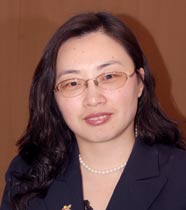
Listen to the faculty member discuss how this situation was resolved as she addresses how communication between the faculty member and the facility staff was improved and strategies used to ensure that the students feel welcome when they arrive on the unit for a clinical day.
TranscriptTranscript
After Lori, the nurse, said that she did not know that students were coming and she had completed all her wound care on the unit, Gabriella remained calm and assured Lori with a smile that it is okay. Then she quickly thought of several strategies to address this.
First, she communicated to Lori what the learning objectives for students today, and clarified with Lori what students could and will do and how their day will be structured. Gabriella also nicely suggested that if any treatments/would care come up during the day, she would appreciate that Lori would supervise and help the students to do them if she is off the unit with other students.
Second, Gabriella communicated to the students that she will make sure students get would care experiences. She will explore if there are opportunities today in other units; if not, she will make sure students get to practice them in the following clinical days. Gabriella further discussed with students any adjustments needed for the day’s flow and the possibility of adding other tasks in light of lack of wound care here. She further stressed that students should work closely with Lori today and talk to Lori often in case other opportunities come up. Since Gabriella always assigned a student as the team leader on each clinical day, she further discussed with the leader what the leader can do to help facilitate today’s practice.
Third, after getting the students start their care activities, Gabriella directly discussed with the Director of Nursing and/or the unit manager about two things: how to better communicate to the facility and staff about student’s clinical days, and whether it is possible for at least some students to participate in wound care in another unit. For the communication issue, Gabriella, the Director of Nursing, and the unit manager reached an agreement that future emails will be sent one day earlier to both the Director of Nursing and the unit manager. They will print a copy and hang it in the nursing station, so all nursing staff can see them. For the wound care opportunity, the Director of Nursing thought it was fine for Gabriella to contact the nursing staff in two other units. After informing students, the student leader, and Lori that she will be in another unit to see if students can do wound care there, Gabriella came to the other units, introduced herself to the unit managers and charge nurses, explained the situation, and discussed the possibility of having students help wound care. She further communicated that she will supervise the students, so there will be no extra work load to the unit staff. As a result, arrangements were made and students rotated in pairs to perform wound care in another unit under Gabriella’s supervision. On the assigned unit, Lori was particularly apologetic about her oversight and went out of her way to help students while Gabriella supervised students in the other units.
Toward the end of the day, Gabriella communicated to the Director of Nursing, the unit mangers, nursing staff, and Lori in all units what students have accomplished in wound care, and thanked them for their flexibility. She further reinforced with Lori the day of the week that students will be here and a student assignment sheet will be posted at the nursing station. She friendly reminded Lori to check the sheet in her future shifts.
Last, Gabriella debriefed the day’s learning and events with students during the post-conference. She discussed with students how to turn a mishap into an opportunity and use it to develop better relationships and leadership skills. Gabriella highlighted a few observations of student activities that demonstrated growing leadership and skill levels in today’s unexpected turn of events. Students expressed that today was kind of exciting and they did get to practice what they are supposed to practice.
Case Study 2: I think I Saw Something That Wasn’t Right: Part 1
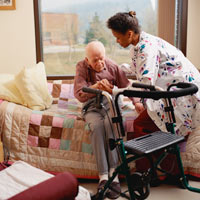
Lucinda, CNA, enters a resident's room and notices that Kathy, a nursing student, is providing perineal and skin care on a resident who has several areas of skin breakdown.

Lucinda observes that Kathy is not using proper infection control techniques when providing this care.
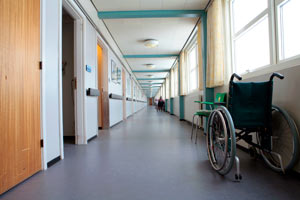
Casey, the nursing faculty, is not available because she is in another room working with a student and resident.
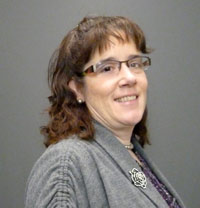
Listen to strategies that were developed by the faculty and the nursing home staff to address making it comfortable for a CNA to approach a student and the faculty about this and similar situations (i.e., breaching confidentiality, providing unsafe care, displaying disrespectful behaviors toward residents).
TranscriptTranscript
In order to facilitate communication between nursing home staff and clinical faculty, preparation work done by the faculty prior to bringing students to the nursing home.
Included a discussion with the nurse manager of the unit that emphasized the value of the CNA to the education of nursing students. The faculty asked that the manager communicate with the nursing home staff that if issues arose with any student, the staff could provide correction and guidance and communicate with faculty if the care of the resident was in jeopardy. This information was provided to the nursing home staff through a unit meeting in preparation for the clinical rotation.
Because the CNA knows the residents better than the faculty and students, they can serve as role models to students. In this situation, the CNA can provide a pair of gloves to the student and offer to demonstrate proper skin and perineal care as well as discuss the policy and procedures which guide the care in the particular nursing home setting. After demonstrating care and directing the student toward the facility’s policy, the CNA can privately discuss the incident with the nursing faculty.
In other situations, such as breaching confidentiality, providing unsafe care or displaying disrespectful behaviors toward residents, the CNA can offer to assist students to understand the appropriate way(s) in which to act in a given situation. They can refer students to facility policies and procedures, offer to role model appropriate behaviors. In addition, they can refer the student to the unit charge nurse or manager as well as the clinical faculty member.
Case Study 3: I think I Saw Something That Wasn’t Right: Part 2
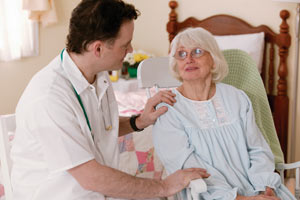
Corey, a nursing student, enters a resident's room and notices that Bill, a CNA, is providing perineal and skin care on a resident who had several areas of skin breakdown.
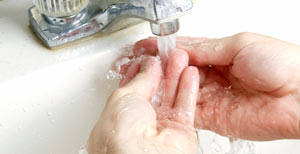
Corey observes that Bill is not using proper infection control techniques when providing this care.
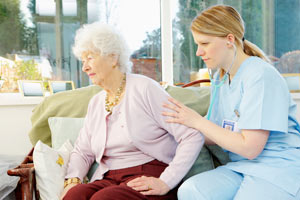
Kathleen, the faculty member, is not immediately available because she is in another room working with a student and resident.

Listen to strategies that were developed by the faculty and the nursing home staff to address making it comfortable for a nursing student to approach a staff member and the faculty about this and similar situations (i.e., breaching confidentiality, providing unsafe care, displaying disrespectful behaviors toward residents).
TranscriptTranscript
In order to facilitate communication between nursing home staff and nursing students, preparation work done by the faculty prior to bringing students to the nursing home included an invitation to the nurse manager of the unit to meet with nursing students during the orientation session for the clinical rotation. During this session, the unit manager can discuss with students how the unit is staffed and how students will interact with several members of the health care team. Both the clinical faculty and unit manager can discuss with students how to approach a staff member who might be providing unsafe care. It is essential that students know they are an important part of the health care team when they are at clinical and, they have a responsibility to report activity which may not seem appropriate. Students are encouraged to talk with the staff member about the incident(s) in order to learn more about a given situation. Students can also serve as role models for providing care so, this might be a first step followed by a discussion with the unit charge nurse, unit manager or clinical faculty member.
In this situation, the nursing student can provide a pair of gloves to the CNA and offer to demonstrate proper skin and perineal care. After this is complete, the nursing student could ask the CNA how to locate the appropriate facility policy and offer to review the policy and procedure with the CNA. The student can preface this with “I would like to know how to find this policy and would like to review how this care should be provided at your facility.” After this, the student can seek out the unit charge nurse and clinical faculty to discuss the situation.
In other situations, such as breaching confidentiality, providing unsafe care or displaying disrespectful behaviors toward residents, the nursing student can offer to assist nursing home staff to understand the appropriate way(s) in which to act in a given situation. They can refer nursing home staff to facility policies and procedures, offer to role model appropriate behaviors. In addition, they can refer the CNA to the unit charge nurse or manager as well as the clinical faculty member.
Case Study 4: Why Would I Want to Work in a Nursing Home?

Jane, a clinical instructor for a group of eight students, has assigned her students to a seven-week clinical rotation in a nursing home. Jane was very excited about this clinical experience because she knew that the nursing home setting would help students learn how to assess and care for frail, older adults.
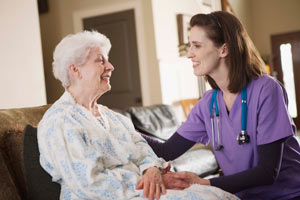
Jane also knew that her students would have an opportunity to learn about and experience caring for people with “geriatric syndromes” (e.g., incontinence, immobility, and dementia).
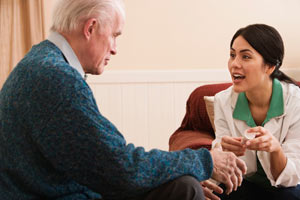
The nursing facility has had students for the last two years. The staff enjoys having the students and is used to them caring for one resident during their full clinical rotation.

However, staff members have observed that the students are often sitting around during the eight-hour shift because the one resident to which they are assigned does not require constant attention.

Yesterday, Jane overheard a couple of her students complain that they had to have this clinical experience in a nursing home. They had heard from other students that the clinical rotation was really boring. They had said they would just be doing what nursing assistants do and that nursing home nurses have boring jobs.

One student mentioned that her aunt, who is a nurse, said that nurses who work in nursing homes work there because they can’t get a job in a hospital.

Jane really wants to make sure that her students have a positive learning experience in the nursing home. She wants the students to be excited about nursing in this environment and to consider a career in nursing homes.

The nursing facility is very interested in having the students apply to work in the facility as nurses after they graduate.
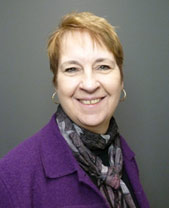
Listen to the faculty member discuss strategies that can be used by the nursing faculty and nursing home staff to address this situation.
TranscriptTranscript
First, I think that Jane should share this enthusiasm that she has with her students, and maybe let them know that this could be a unique and exciting experience for them. She should tell them that they'll be busy all day, that they won't be standing around, and that there'll be all different types of learning, cares, and experiences, and that they'll continuously be challenged in that area. She might also want to challenge them to create an activity on their own which they would take the lead for, and would assure that they become involved with the residents. Jane might then want to think about sharing this information with the nurse manager, and then the two of them could collaborate to develop learning activities for the students. This could include an activity where the student would spend time with each of the nurses in, especially, leadership positions, so that she could become familiar first-hand with the various jobs that are available in a nursing home. I think it would also be valuable to talk to the student about how valuable the job of nursing assistant is in this environment, and have them specifically interact with the residents and the nursing assistants together. Jane should also talk to the students about the necessity of a team model in a nursing home, so that she can see the various roles again, and she can see the necessity for them to work together. A post-topic conference could include a discussion about the various roles - the similarities, the differences, - and how important each is in this environment. Finally, I think it would be important for Jane to talk about the specialized care that's necessary to be provided in a nursing home, and the unique and expanded education that nurses actually require to take care of a geriatric person. Then it might be worthwhile to have some of the nurses share with the students why they chose geriatrics, in a specialty or as a specialty versus just a place to work when no other jobs are available.